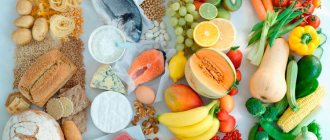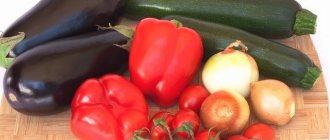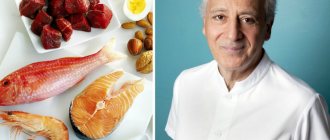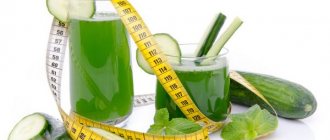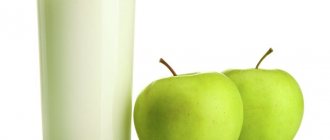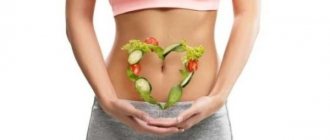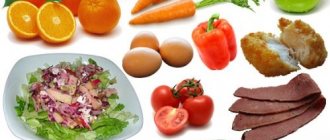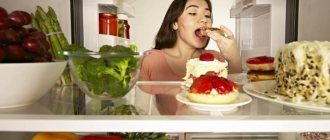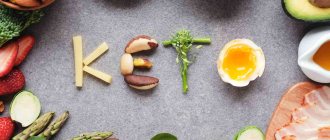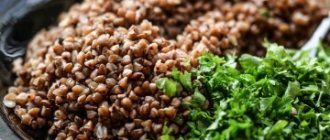At first glance, a low-carbohydrate diet and vegetarianism do not suit each other at all - the list of products of this dietary model does not include meat, fish and eggs, which are its basis.
However, if you are a supporter of exclusively plant-based foods, your chances of losing weight on a protein menu increase significantly. The main thing is to correctly plan your diet, remove cookies, bread and cakes from the access area, do not drink calories in the form of soda, sweet coffee and alcohol and believe that everything will work.
What is a no-carb diet?
The name no-carbohydrate diet speaks for itself. Nutrition involves reducing carbohydrates in the diet to a minimum. It is not recommended to completely refuse in order to maintain good functioning of the gastrointestinal tract and ensure the supply of necessary vitamins and minerals.
The diet reduces not only fast, but also slow carbohydrates. Nutrition is based on protein foods, fats and vegetables. Vegetables are included in the diet for good digestive tract function and as sources of vitamins.
A low-carbohydrate diet is the avoidance of carbohydrate-containing foods in order to lose weight.
You can choose any culinary method of cooking: frying, stewing, boiling, baking. The calorie content of the diet and the number of meals are not limited.
Foods to Avoid
A no-carb diet is very strict and excludes several food groups, such as:
- Grains : rice, buckwheat, millet, barley, quinoa, wheat, bread, pasta
- Sweets and baked goods : cakes, cookies, candies, carbonated drinks, sugary drinks
- Fruits : apples, oranges, bananas, berries, kiwi, pears
- Starchy vegetables : peas, corn, zucchini, potatoes
- Beans and vegetables : all types of beans, chickpeas, lentils
- Dairy products : milk and yogurt
- Condiments with added sugar : ketchup, barbecue sauce, salad dressings
- Alcohol : beer, wine, liquor, sweet mixed drinks
Summary:
Foods to avoid on a no-carb diet include all grains, sweets, baked goods, fruits, starchy vegetables, legumes, milk, yogurt and alcohol.
What happens in the body when you give up carbohydrates?
With a balanced diet, the body receives energy from carbohydrates, which it converts into glucose. Excess glucose is stored as glycogen in the liver and stored as fat mass. When there is a lack of carbohydrates, the body begins to break down fat reserves, turning them into ketone bodies. This mechanism helps the body survive in starvation conditions. When carbohydrates are deficient, ketones nourish the brain and act as energy for vital functions. This process is called ketosis.
Types of low-carbohydrate diet
This type of food is divided into several types. They differ in the ratio of proteins, fats, carbohydrates, as well as the mode of their consumption. and can be as effective as wrapping with cling film at home. One of the most popular types of carbohydrate-free diet is the keto diet. It differs from the usual low-carb diet in the predominance of fat in the diet. Fats are consumed of both plant and animal origin.
The remaining types of this diet differ only in the periods of time with the minimum carbohydrate content recommended for effective fat burning.
Constant
In this diet, carbohydrates are limited on an ongoing basis. Their content in the diet usually does not exceed 20 grams per day. The menu consists mainly of proteins and fats. Vegetables of any kind are present in small quantities. In the first week you may feel weak and dizzy. When the body goes into ketosis, your health improves and you feel a surge of strength.
Power
This variety is more suitable for athletes who engage in strength training. In this nutritional system, before going to the gym, you consume a small amount of carbohydrates so that you have enough energy. In this case, it is necessary to exercise intensively in order to expend all the energy received from carbohydrates. If the load is not enough, the weight will not go away.
It is believed that a low-carbohydrate diet is one of the most effective for losing weight, getting rid of excess weight and maintaining a stable body weight.
Circular - the most effective
This type involves cyclical nutrition without carbohydrates (or with a minimum amount of them) for six days, and on the seventh day the diet includes a large amount of carbohydrates in the form of cereals, durum pasta, and all types of vegetables. In the first half of the seventh day it is allowed to eat fruits.
This carbohydrate loading is necessary to develop special enzymes and to increase metabolism. On the seventh day, the body stores glycogen in the liver and muscles. The carb-loading circuit allows you to stock up on energy for the next week and feel good.
Drinking regimen during the keto diet
During a low-carbohydrate diet, be sure to drink enough clean water, 8-10 glasses per day. This is necessary for good peristalsis. A low-carbohydrate diet implies a reduction in fiber-rich foods (cereals, fruits, some vegetables) in the diet, so stool may be irregular. A sufficient amount of liquid solves this problem.
Water also helps remove waste products during ketosis. An excess of ketone bodies with insufficient drinking can lead to poor health.
How long can you stay on a low-carbohydrate diet?
If there are no contraindications and you are in good health and well-being, you can stick to a carbohydrate-free diet for as long as you like. Gradually, you can switch to a low-carbohydrate diet, with a carbohydrate content of 50-80 grams in the diet.
It is important that a diet without carbohydrates usually does not require counting calories, which means that those losing weight do not need to fight the feeling of hunger.
Who is suitable for a low-carbohydrate diet?
A diet aimed at reducing the amount of carbohydrates in the diet is most popular among athletes . They often use it to dry the body, in other words, to remove all excess subcutaneous fat.
How does drying happen? When a person exercises regularly, he burns carbohydrates. If their consumption is quickly reduced or stopped, then the fat layer begins to disappear.
A person who finds it difficult to exercise will also benefit from a carbohydrate-free diet . Firstly, he will stop gaining weight, and secondly, at the end of the two-week diet, unnecessary kilograms will slowly disappear.
What can you eat on a low-carb diet: allowed foods
Unlike a protein diet for gaining muscle mass, the basis of the diet is meat and fish products in any form (fried, baked, boiled). You can also have unlimited quantities of seafood, eggs (stuffed, including with permitted products), and certain types of cheeses. Smoked meats and sausages (with good composition, without starch and flour) are allowed.
List of products from the meat category:
- pork;
- chicken;
- beef;
- turkey;
- mutton;
- rabbit;
- duck;
- goose;
- veal;
- any game.
You can also consume by-products in any form without limiting yourself:
- salo;
- chicken liver;
- language;
- kidneys;
- lungs;
- stomachs.
You can also eat sausages, but you should carefully choose and look at the composition so that there is no flour, starch, milk, pearl barley and there are less than 2 carbohydrates per 100 grams:
- sausage;
- ham;
- sausages;
- sausages;
- bacon;
- ham.
Fish and seafood can be in any form and of any variety:
- sea;
- river;
- shrimps;
- mussels;
- caviar;
- milk;
- squid;
- octopuses;
- natural crabs;
- fish liver
As for dairy products, you don’t have to limit yourself to consuming all types of hard cheeses and cheeses in brine. The main thing is that they contain no more than 2 grams of carbohydrates per 100 grams of product.
A no-carbohydrate diet should not be followed for more than 2-3 months. Otherwise, it may cause harm to health.
Other products include:
- salt;
- eggs;
- butter;
- any vegetable oil (olive, sunflower, mustard, flaxseed);
- mayonnaise (it is important to choose one with a good composition, with no more than 2 grams of carbohydrates per 100 grams of product, or prepare it at home);
- any vinegar;
- gelatin;
- any mushrooms.
Drinks you can:
- any type of tea, just not store-bought ones with sugar;
- mineral water;
- coffee;
- cocoa (not prepared with sugar);
- cranberry juice (without sugar or with sweetener).
A separate category during a low-carbohydrate diet is sweeteners. During the diet, you are allowed to use any cyclamate, aspartame, or erythritol. During all diets, it is not recommended to drink alcoholic beverages. They can stop the process of losing weight and contribute to the formation of edema. On a low-carbohydrate diet, alcoholic drinks that do not contain carbohydrates are allowed.
Acceptable during the diet:
- dry wine;
- dry champagne;
- tequila;
- rum;
- vodka;
- cognac;
- whiskey.
Refusal of carbohydrates and a carbohydrate-free diet first lead to normalization of blood sugar and insulin levels, and then transfer the body to ketone mode.
Drinking fluids while dieting
It should be noted that you can stay on such a diet as long as you like, or as long as the body of the person losing weight can withstand. There are just a few things to keep in mind. Namely:
- Regular lack of carbohydrates negatively affects brain function and also negatively affects the functioning of the nervous system;
- Excessive amounts of protein require proper physical activity.
Don't forget about regular physical activity
That is why athletes mainly adhere to this diet.
Important! If a protein or carbohydrate-free diet is used specifically for weight loss, then you should not forget about constant physical activity and regular exercise. This is very important and necessary.
As for proper fluid intake, you should also be especially careful about how much water you drink daily. Based on the fact that while losing weight you should limit yourself to eating fruits and vegetables, which are the main stimulants of intestinal motility, you should definitely drink a lot of water. In this case, the liquid will help remove all remaining food from the intestines and also stimulate the renewal of body cells.
Advice: Ideally, you should drink at least one and a half, or even two liters of clean water per day, and the water should not be carbonated. You are also allowed to drink green tea.
You can drink coffee, but without sugar. Of course, we must not forget that coffee helps remove fluid from the body.
It is recommended to drink plenty of water or green tea
Well, you will have to give up juices and various carbonated drinks, as they contain a lot of sugar.
Partially restricted or prohibited products
Partially permitted foods on a carbohydrate-free diet can be divided into several groups. The first group contains mainly green vegetables, which can be consumed in any form, but carefully ensure that the amount of carbohydrates does not exceed 30-50 grams per day. Or, roughly speaking, you can eat about half a kilogram of this group per day.
Products to consume up to 0.5 kilograms:
- cucumbers;
- celery stalk;
- sorrel;
- lettuce leaf;
- broccoli;
- cauliflower;
- Brussels sprouts;
- white and red cabbage;
- arugula;
- all types of salads;
- natural asparagus in green stems;
- green beans;
- green peas in pods;
- spinach;
- radish;
- daikon;
- sea kale.
This same group of partially permitted products includes pickles: pickles, tomatoes, sauerkraut, wild garlic. The only fruits you can eat are lemon and cranberries.
A separate category includes other vegetables and dairy products, which are higher in carbohydrates. They can be used in cooking or salads. On average, consumption of this category per day should not exceed 200-300 grams.
Refusal of carbohydrates gradually normalizes metabolism, forcing the body to use fat reserves rather than require glucose from fast carbohydrates.
This category of products includes:
- tomatoes;
- radish;
- olives;
- olives;
- eggplant;
- bell pepper;
- zucchini;
- cottage cheese;
- sour cream;
- cream;
- creamy, soft, processed, curd cheeses (it is important to carefully study the composition so that it does not contain starch and carbohydrates are no more than 3 grams per 100 grams of product);
- avocado;
- pork and beef liver;
- green onion;
- greens (parsley, dill, basil, cilantro);
- pickles;
- ginger.
And the last group of products that use one or two tablespoons in cooking includes:
- tomato paste;
- carrot;
- onion;
- garlic;
- milk.
After digestion, carbohydrates from food enter the bloodstream in the form of glucose.
On a carbohydrate-free diet, the following are completely excluded from the diet (these products cannot even be eaten for breakfast):
- sugar;
- citrus fruits, except lemon (grapefruit, tangerines, oranges)
- flour;
- starch;
- any dough;
- bakery products;
- pasta;
- cereals (rice, buckwheat, pearl barley, semolina, oatmeal);
- honey;
- chocolate;
- potato;
- powdered drinks;
- all fruits and berries, except those allowed;
- watermelon;
- melon;
- yogurt;
- fermented baked milk;
- curdled milk;
- beet;
- marshmallows;
- paste;
- marmalade;
- candies;
- gingerbread;
- beer;
- sweet alcoholic cocktails;
- bran;
- legumes;
- corn;
- powdered milk;
- juice;
- crab sticks;
- nuts.
What products are strictly prohibited?
As mentioned above, there is a certain list of products that are strictly prohibited and should absolutely not be consumed.
Baking, as well as sugar and almost all types of cereals, has already been discussed above. But that's not all that's prohibited. In general, a low-carbohydrate diet for weight loss involves a ban on a number of other foods; there is even a whole table that lists them. This:
- vegetables that contain a lot of starch (carrots, corn, potatoes, beets);
- artificial sugar substitutes;
- any alcohol;
- products that have been subjected to severe heat treatment;
- all trans fats;
- all sweet fruits.
Of the fruits, you can only leave citruses or sour berries. You can also add some coconut, as well as peach and some varieties of apples.
Another piece of advice from experienced nutritionists is that while following this diet, you should make it a rule to read all the information on the labels. You don’t need to trust various advertising claims that this is healthy food and the like. It is best to use natural products that definitely do not contain harmful substances.
From fruits you can only leave citruses or sour berries
As mentioned above, a low-carbohydrate diet for weight loss is based on the fact that the body does not receive enough energy from carbohydrates and spends its own. But we must not forget that such a complete rejection of carbohydrates leads to the development of the cardiovascular system, as well as renal failure. Well, of course, it can negatively affect brain activity.
Types of diet and dietary features
The menu for every day with a low-carbohydrate diet consists of protein dishes, permitted vegetables and fats in any form (vegetable and animal). You can make desserts using allowed dairy products using gelatin or bake them (without flour). To strictly adhere to the regime, it is better to print out a table of permitted products and carry it with you. In this diet, there is no division into what exactly to eat for breakfast, lunch and dinner. Allowed foods can be eaten at any time of the day.
Restricting carbohydrates in the diet usually leads to an unnoticeable reduction in caloric intake by 20-25%.
For drying the body
In order to reduce the fat layer and remove excess water from the body, they resort to the so-called drying. In this diet, it is better to exclude partially permitted foods from categories that consume 300 grams per day and 1 tablespoon for cooking. The emphasis is on meat and fish dishes. Vegetable and animal fats are required in the diet. When fats predominate in the menu, the process of ketosis intensifies, which means that excess weight disappears faster. Be sure to drink at least 1.5 liters of clean water per day.
Circular no-carb diet
Otherwise, this variety is called cyclic. The circuit diet can be applied in two ways. In the first, carbohydrates are reduced to a minimum for 6 days, and on 7 days a carbohydrate load is arranged. Then the cycle repeats.
In the second method, they eat with a minimum content of carbohydrates in the diet for 5 days, and on days 6 and 7 they eat high-carbohydrate dishes.
During pregnancy
During the period of bearing a child, it is recommended to adhere to a balanced diet to ensure the supply of all necessary vitamins and minerals. In cases where a pregnant woman is overweight, you can stick to a high-protein and low-carbohydrate diet.
A carbohydrate-free system helps during pregnancy not to accumulate excess fluid, and therefore to avoid edema. This regimen is suitable up to 30 weeks. For women in later stages, the load on the kidneys and liver may increase.
Turbo diet without carbohydrates
To enhance the process of breaking down fat deposits, you can use an accelerated course of nutrition by completely eliminating carbohydrates from the diet. This regime is followed for 7 days, then they switch to a low-carbohydrate diet. It is better to plan the menu for a week without carbohydrates in advance so that you do not have the desire to eat prohibited foods. In the turbo version, both vegetable and animal fats predominate.
In the absence of carbohydrate foods, calories come from protein and fat—and even on a keto diet, it's hard to eat too much of these.
Diet without fats and carbohydrates
The strictest carbohydrate-free diet is a diet without fats and carbohydrates. This option is suitable only for healthy people. Vegetables and fats are excluded from the menu. The diet consists exclusively of protein products. For this type, choose low-fat meats and fish, low-fat cottage cheese, and eggs. This type is followed for no more than 7 days, during which weight loss noticeably accelerates.
Menu for every day for weight loss at home
Low-carbohydrate foods have a balanced and varied diet. The recipes for men's and women's diets are the same, but the amount of food consumed at one time varies.
Weekly menu for women
Sample no-carbohydrate diet menu for a week for women:
| Day | Breakfast | Dinner | Dinner |
| 1 | Omelette with skim milk and 2 eggs, unsweetened green tea | Boiled beef with broth and grilled broccoli | Brown rice and boiled chicken breast |
| 2 | Buckwheat porridge with milk and a small piece of cheese | Steamed fish with summer tomato and cucumber salad | Stewed beans and 1 hard-boiled egg |
| 3 | Cottage cheese casserole and unsweetened tea | Brown rice with baked chicken breast | Orange and a glass of kefir |
| 4 | Buckwheat porridge with milk and unsweetened tea | Broth with homemade meatballs | Stewed green beans |
| 5 | Cottage cheese casserole and unsweetened coffee | Baked beef with spices and vitamin salad | A glass of kefir with an apple |
| 6 | Omelet with ham | Baked eggplants and boiled buckwheat | Stewed vegetables: tomatoes, onions and cabbage |
| 7 | Buckwheat porridge with milk and unsweetened tea | Steamed fish and tomato and cucumber salad | Apple with a glass of low-fat kefir |
In addition to main meals, you must have 2 snacks of a boiled egg, baked vegetables or a glass of kefir.
Differences in the menu and calories for men
For average physical activity, women should consume about 1,500 calories per day. For men, this figure is higher - from 2000 to 2500 kcal, so they will need a slightly larger amount of food. The menu can be left the same or only the amount of proteins can be increased.
Low Carb Diet Recipes
Meals with a minimum amount of carbohydrates in the diet are nourishing and varied. For a low-carbohydrate diet for weight loss, the menu for each day is made up of a list of allowed foods.
Chicken soup with meatballs
Step-by-step recipe for the first course:
- Rinse the chicken under running water and cook the broth.
- Strain the finished broth and add salt.
- Add green beans, Brussels sprouts, chopped zucchini.
- Add the egg to the minced meat and roll into small balls.
- Place the meatballs in the broth and cook for 15 minutes along with the vegetables.
Baked mackerel
Recipe for cooking fish in stages:
- Rinse the fish in running water and rub with salt and pepper to taste.
- Melt two tablespoons of butter.
- Add chopped garlic to the oil.
- Place a sprig of dill and lemon slices inside the fish.
- Drizzle butter and garlic on top.
- Bake in the oven for 20 minutes at 200 degrees.
A no-carb diet means avoiding flour products that contain gluten.
Pizza without dough
Step-by-step preparation of pizza without flour:
- Wash the zucchini and cut into slices.
- Place on a greased baking sheet.
- Grease with mayonnaise and ketchup.
- Place chopped tomatoes, mushrooms, bell peppers, salami, brisket, and olives on top.
- Sprinkle with grated cheese.
- Bake in the oven for 15 minutes at 200 degrees.
Seafood salad
Steps for preparing a hearty salad:
- Scald the squid, peel and cut into strips.
- Boil for five minutes in salted water.
- Peel the shrimp and place in a salad bowl with the squid.
- Chop cilantro, dill and add to seafood.
- Squeeze a couple of cloves of garlic.
- Cut boiled eggs into cubes.
- Sprinkle with lemon juice, add soy sauce and mayonnaise, stir.
No carb vegetable salad
Any permitted vegetables can be used in a salad using this system.
Example of vegetable salad:
- Wash the tomato, cucumber, bell pepper and cut into cubes.
- Chop Chinese cabbage.
- Mix the ingredients, season with olive oil.
- Add salt to taste.
Menu sample
Here is an approximate five-day menu for a low-carb diet.
Day 1
- Breakfast : eggs, bacon, sliced avocado
- Lunch : lettuce with turkey, cheese and olive oil
- Dinner : fish, zucchini noodles, sunflower seeds
- Snacks : beef jerky, cheese
Day 2
- Breakfast : eggs, steak, bell pepper strips
- Lunch : salad with fish, carrots and avocado
- Dinner : lamb ribs, spinach salad with walnuts and olive oil dressing
- Snacks : hard-boiled eggs, pistachios
Day 3
- Breakfast : eggs, turkey sausage, avocado
- Lunch : Scallops and Brussels sprouts, roasted with Parmesan cheese
- Dinner : Pork chops, fried tomatoes and turnips
- Snacks : sunflower seeds, brie cheese
Day 4
- Breakfast : Shredded eggs, jalapenos, cheddar cheese
- Lunch : turkey with fried rutabaga
- Dinner : Meatballs and zucchini noodles with roasted tomatoes
- Snacks : sardines, macadamia nuts
5 day
- Breakfast : omelet with cheese and broccoli, chicken sausage
- Lunch : arugula salad with olive oil and cashews, boiled pork
- Dinner : Coconut crusted shrimp, grilled asparagus and mushrooms
- Snacks : turkey jerky, avocado
Summary:
A no-carb diet is very restrictive and primarily based on animal products and low-carb plant foods.
Contraindications and side effects
Before you start following a carbohydrate-free diet, you should consult your doctor to avoid worsening existing chronic diseases.
Contraindications:
- liver and kidney diseases;
- gout.
For a healthy person, a low-carb diet will not cause harm. At first you may feel weak and dizzy. This happens when the body adjusts to ketosis mode. Harm from a low-carbohydrate diet can occur if you do not check with your doctor about the presence of contraindications. The most common side effect of this diet is constipation. They can be easily eliminated by adding more vegetables to the diet and following a drinking regime.
A low-carbohydrate diet is a nutritious and varied diet. If you adhere to the list of allowed foods in your diet, the results will not keep you waiting.

